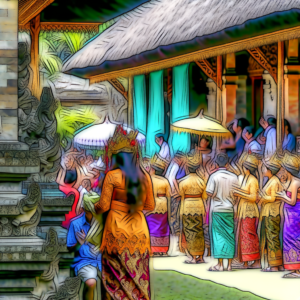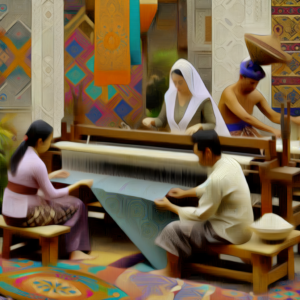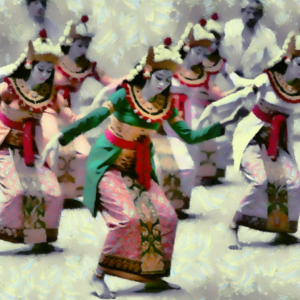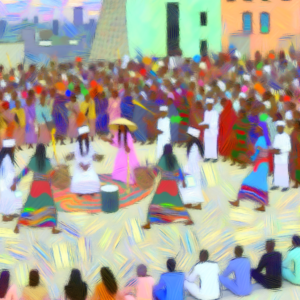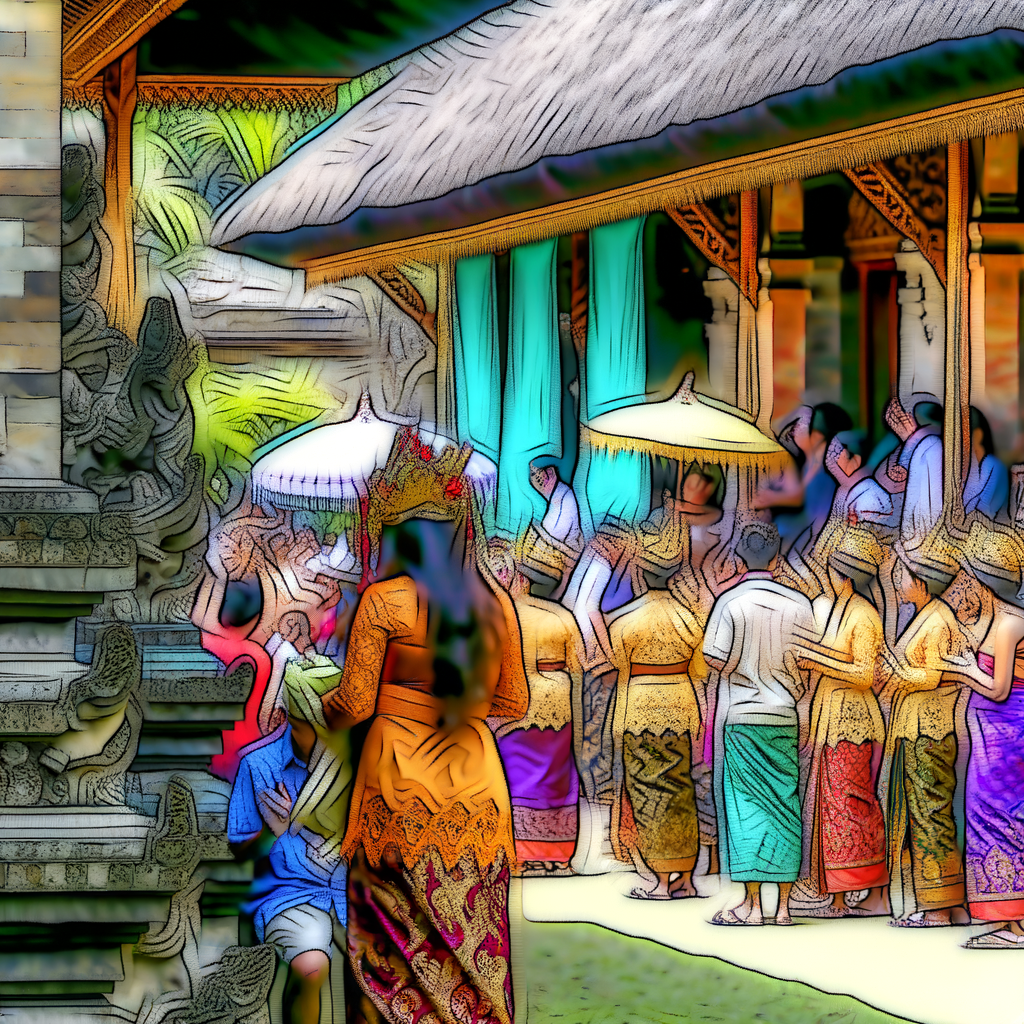> Part 3 of the African Tapestry: Threads of Tradition and Transformation in Ethiopian Culture series
Ethiopia’s landscape is not only defined by its rolling hills and verdant plateaus but also by the vibrant hues and rich textures of its textiles—a testament to a culture steeped in history and craftsmanship. In this installment of our series, we delve into the world of Ethiopian textiles, exploring how they capture the essence of the nation’s identity, celebrate its heritage, and reflect its journey toward modernity.
At the heart of Ethiopian textile art is the iconic Habesha kemis, a traditional dress woven meticulously by skilled artisans. These elegant garments, often white with colorful borders handwoven in intricate patterns, are a staple in Ethiopian wardrobes. A symbol of cultural pride, the Habesha kemis is worn during important ceremonies and rituals, embodying the country’s deep-seated value for tradition.
The crafting of these textiles is a labor of love, relying on age-old techniques passed down through generations. In crafting gabis (shawls) and netelas (scarves), artisans employ traditional weaving techniques that involve detailed handwork and the use of looms—a practice that demands patience as well as precision. This painstaking process is more than just a method of production; it is a cultural ritual in itself, celebrating heritage and community.
Yet, as Ethiopia strides confidently into the 21st century, its textile industry has not been immune to the tides of change. Modern Ethiopian designers are innovating, merging traditional aesthetics with contemporary styles to meet the evolving tastes of younger generations both at home and abroad. This movement towards modernization is a dance of continuity and change, where the past intertwines with the present to create something uniquely Ethiopian.
These contemporary adaptations have earned a place in the global fashion arena, with designers drawing international attention to Ethiopia’s prowess in sustainable and ethical fashion practices. By marrying tradition with innovation, Ethiopian textiles serve as a vibrant palette reflecting an identity in transition—a nation steadfast in its cultural roots while embracing the creativity and sustainability of the future.
In this exploration of Ethiopian textiles, we witness a narrative of resilience and adaptability. These traditions, rooted in history and reinvented for the modern age, tell a story of a culture thriving amid change. As we continue our journey through Ethiopia’s cultural landscape, one thing remains clear: each thread in its tapestry, each strand of its fabric, weaves a story of tradition, transformation, and timeless elegance.
Recent Posts songplode cultural case studies
- Festivals of Harmony: Celebrating Unity and DiversityExplore Bali’s vibrant festivals, including Galungan, Nyepi, and Pagerwesi, which celebrate harmony and spiritual renewal. These customs persevere amid globalization, preserving cultural identity and promoting unity.
- Weaving Culture: Textiles and Traditional CraftsmanshipThis exploration of Balinese textiles reveals ikat and songket as more than fabrics; they embody cultural storytelling, tying together tradition and identity. Artisans strive to maintain these crafts amid modern pressures.
- The Art of Movement: Dance and Performance in BaliBali’s traditional dance and theatrical performances vividly portray its cultural essence, weaving tales of folklore and sacred rituals that balance tradition with modern appeal while captivating global audiences.
- Voices of Change: Social Movements and Cultural IdentityBrazil’s vibrant social movements are reshaping its cultural identity at the intersection of tradition and modernity. From rural reforms to Afro-Brazilian heritage reclamation, art and activism drive profound societal change.


